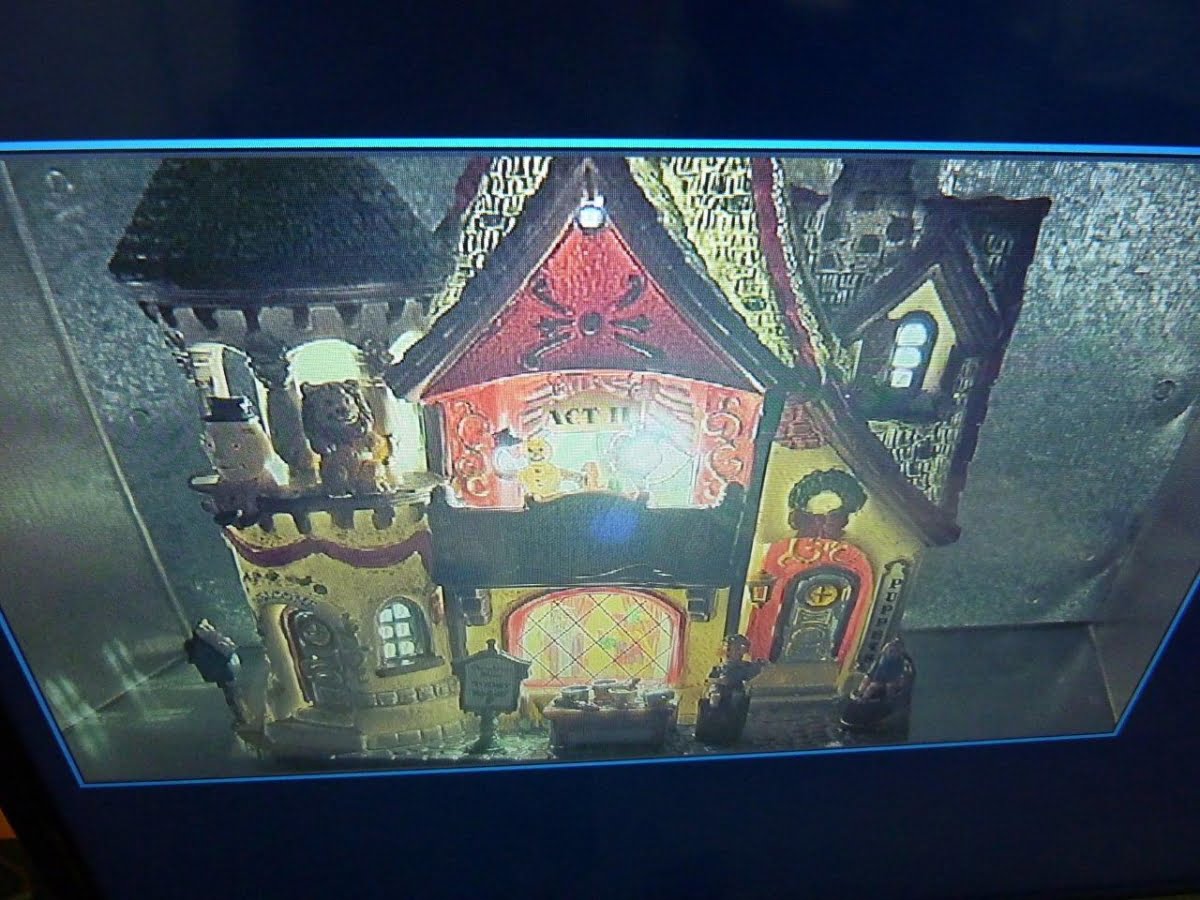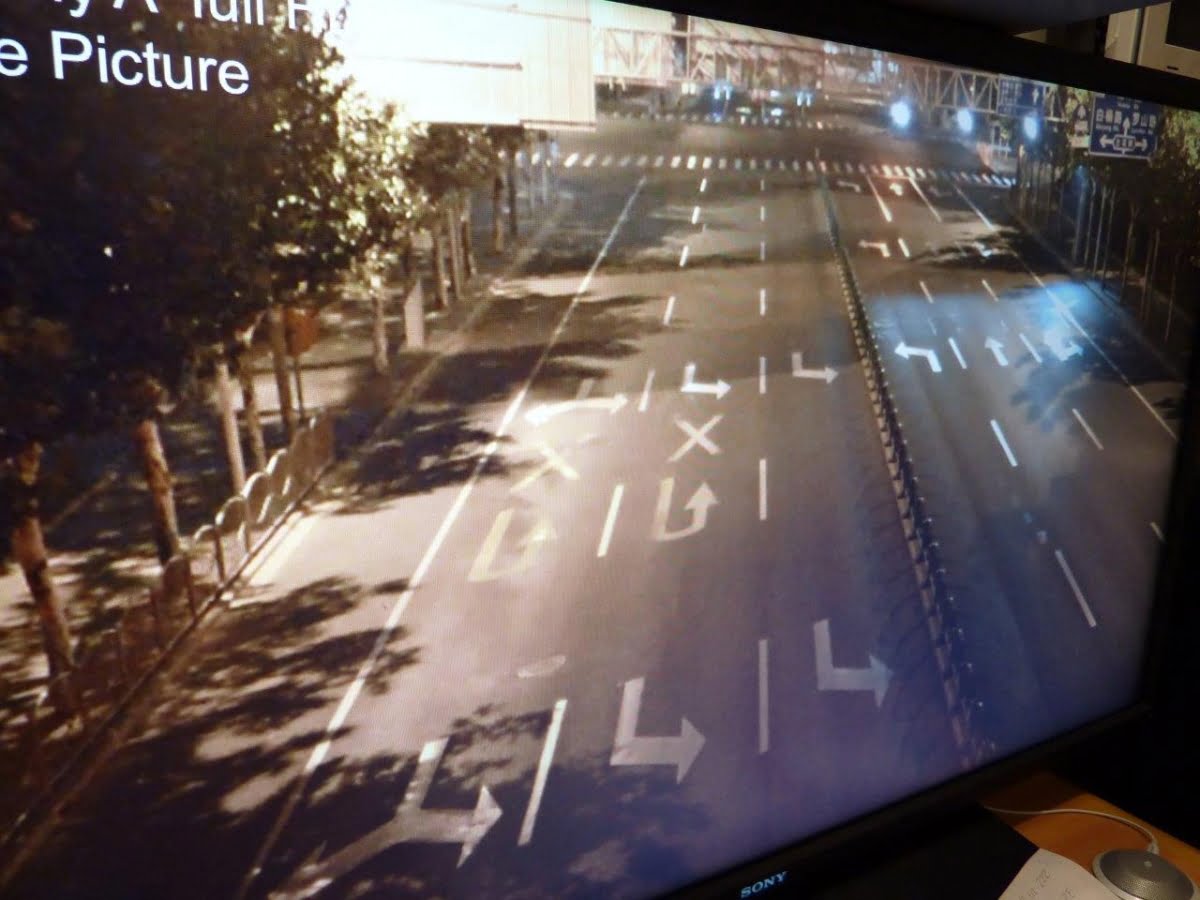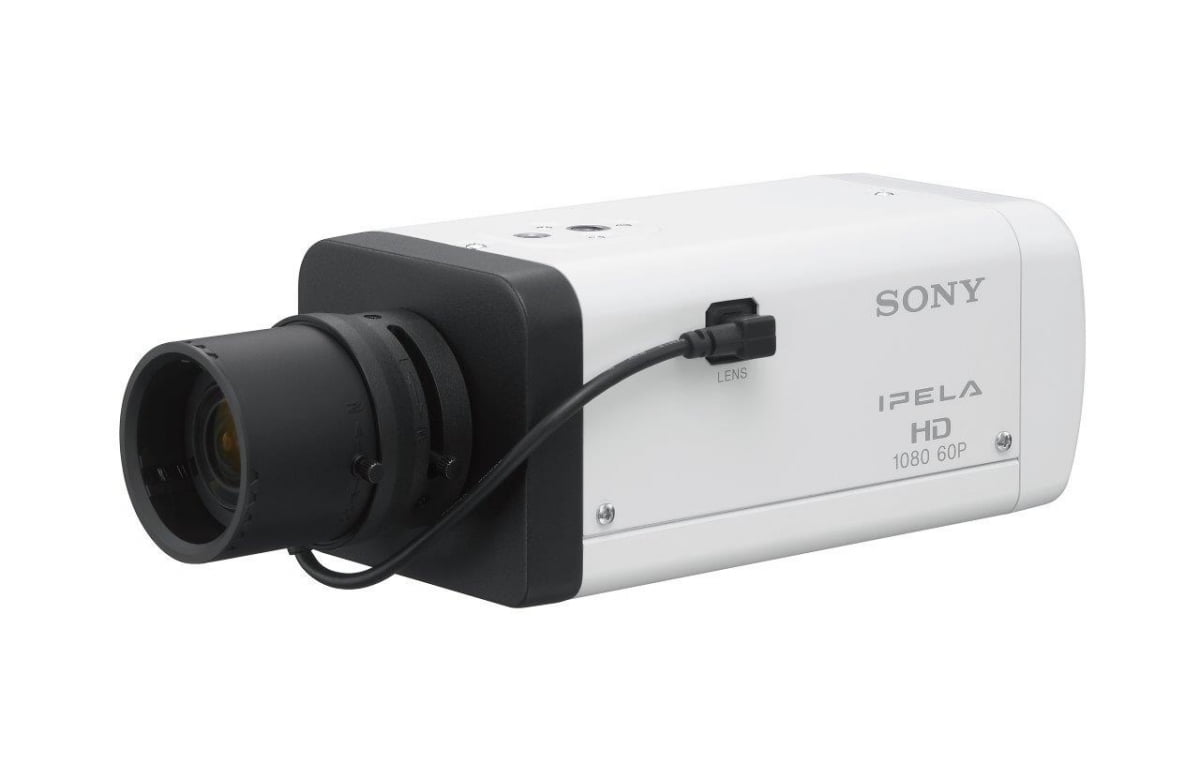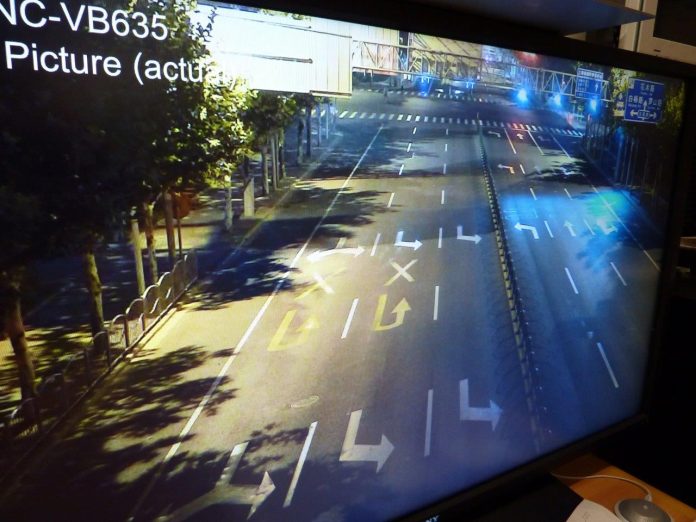Sony will release a swag of new cameras in the new year – not just new models but new technologies – including thermal cameras and panomorph units incorporating Immervision lenses. Global Sony improvements include new dome seals and cable glands.
RECENTLY I took a trip out to Sony chat about planned releases for 2014 and there’s plenty to look forward to as the company gets its entire range loaded with the Generation 6 (Gen 6) sensor and processing engine. That’s an interesting move in itself, notwithstanding the fact Sony has been expanding its range to meet high temperature and panoramic applications.
In short, Sony has inserted its Gen 6 sensor and IPELA Engine under the hood of every camera in the Gen 6 range. So what is Gen 6? In a nutshell, Sony Gen 6 is built around the 1/3-inch progressive scan 2.1MP Exmor CMOS sensor offering 1920 x 1080 pixels. There are 720p and 1080p options, 30 and 60fps versions, along with 90 and 130dB versions. Gen 6 compression includes H.264 (High/Main/Baseline Profile)/JPEG video codecs and AAC (16 kHz/48 kHz)/G.726/G.711 audio codecs.
Part of Gen 6 core functionalities are scene analytics including face detection, intelligent motion detection and a rule-based filter (DEPA Advanced). There’s also exposure control, exposure compensation, auto white balance, AGC, shutter speed, and iris control as well as image stabilisation and visibility enhancer. Minimum scene illumination at 50 IRE in colour (that’s at about half normal contrast) is claimed to be 0.05 lux for 720p version at (F1.2).
Sitting behind the Exmor chip and handling much of this functionality is Sony’s IPELA Engine EX, an integrated signal processing system that combines Sony’s various signal processing and analytics technologies.
These include XDNR noise reduction processor, View-DR which works to enhance light and dark areas of a scene, the Colour Adjustment module, the Encoding and Packetizing modules, and the simultaneous DEPA Advanced Video analytics model.
“Sony Japan has fast-tracked Gen 6 to market on the back of lower manufacturing costs and superior technology. The latest in Exmor chip technology is what will leads us forward, coupled with the new IPELA Engine,” explains Steve Charles, Sony’s sales and marketing manager, video security solutions.
“The Gen 6 Exmor chip is unique to us. It’s at least 2 generations ahead of everyone else and it’s supported by the IPELA Engine. And what Sony is now doing is selling its Gen 6 technology in layers of functionality – W Series (top of the line), V Series, E Series, X Series and C Series – a cloud-ready camera which offers Gen 6 performance.”
This is a significant move from the point of real world capability.
“If you look at some of the cloud cameras out there they are running at VGA and are terrible in low light,” says Mark Franklin, Sony’s product manager, video security solutions. “But our C Series cloud-ready cameras are a proper CCTV camera in a very compact form factor.”
How does Sony delineate between each Series in its camera lineup? It all comes down to functionality.
“A less expensive series of Sony cameras will give you a simpler camera – still with all the functionality of Gen 6 but with fewer bells and whistles. If you don’t need multi-power I/O let’s take it out. If you don’t need true day night, take that out.
“But while we’ve stripped some of the features back, we’ve left the core functionality in place,” Charles says. “The Exmor imager and IPELA Engine are the same so all Gen 6 cameras have the same low light performance, they all have Wide Dynamic Range (WDR), noise reduction, digitally enhanced analytics and other Sony standard features.
“With some of our competitors, when you get into the lower end of their ranges, fundamental image quality is compromised. We don’t do that. All Gen 6 cameras do not compromise in low light – even in low light our cameras stay at full colour. There’s no drop in resolution in low light – we keep our resolution in HD – we don’t reduce to D1 or switch to SVGA.”
To indicate the capability of the Gen 6 technology there are video recordings and as Franklin is quick to point out, this footage is a raw AVI file, it’s not been through a VMS and had editing. As Charles plays and pauses a traffic recording repeatedly, the paused frame is a crystal clear 1080p image every time of vehicles and their number plates. It’s striking performance. And there’s no doubt that with 60 frames you get better clarity with fast moving vehicles, day and night. I can see the difference.
Next, we look at an industrial unit site. What we are viewing is a recorded shootout undertaken by an integrator comparing Sony and other Tier One competitors on one VMS to ensure objectivity. To the eye the performance of the Sony Gen 6 is much superior, particularly when it comes to low light.
“What we are looking at here is the Sony SNC-VB600 camera we showed at BGWT in a light controlled environment,” Franklin explains. “The idea there was to show the cameras at the edge of their specified capabilities.”
I saw this demo on the Sony stand at the BGWT confab on the Gold Coast myself. The Sony camera and a leading competitor were buttoned up in a closed environment in default configuration and the lights were turned down in realistic stages from 10 lux to 5 lux to 1 lux. The results were interesting. Both cameras were very good but the Sony performed measurably better in that test.

Competitor in the 'dark box' at 10 lux

Sony in the 'dark box' at 10 lux
“With some of our competitors, when you get into the lower end of their ranges, fundamental image quality is compromised. We don’t do that”
Back in the Sony demo room, Franklin shows me footage from the ½-inch SNC-VB635 in a public surveillance application – a major city street with an intersection. Yes, you read that right – Sony has a ½-inch imager. The depth of field in our demo is over 100m and the scene is complicated by footpaths shaded by trees in full leaf and multiple light sources offering varying levels of glare.
“This will be the best low-light 1080p camera for city surveillance when it becomes available early in the New Year,” Franklin explains as he steers his way into the demo footage. “The VB635 has super high sensitivity, RS-485 support, 60fps, image stabiliser, Sony’s View-DR (WDR). You get the Exmor sensor and IPELA Engine with all the processing that brings.”
We look at the competitor first, a well known brand that makes some excellent cameras. It’s performing strongly with very good depth of field, low light performance and clarity. You’d be happy with this image if you didn’t see the comparison. It shows the Sony is simply doing far better with colour, with sharpness, with contrast, with blooming, with variable light levels when peering under the trees. It’s doing better with depth of field, too. I can see people on the road at 70m that are a blur through the other camera.

Leading competitor in same public surveillance application
Looking at the 2 images side by side, the competitor is going a bit sepia but the Sony colour reproduction is superb. I can see this in the yellow markings on the road which I can’t see with the competitor. It seems the Sony is still operating in colour while the other camera has gone to night mode. And I can see the image clarity is better, too. It’s really quite noticeable that the Sony image is sharp, not soft. Even the bark on the trees has texture. It’s nice work from Sony.
View-DR (Wide dynamic range) to handle the challenges of backlight is also a key aspect of Gen 6 cameras. To demonstrate this, we look at a challenging carpark driveway through a Sony Gen 6 camera with 130dB. There’s also a visibility enhancer in each camera that adjusts the lowlights and the highlights – that’s where the View-DR kicks in.
“What the camera does is take 4 images at different shutter speeds and all this happens in real time with the processing done simultaneously,” Franklin tells me. “The way it works is that the processor is actually running at 120 frames per second and there’s no latency because the multiple shutters are working faster than real time.”
The display shows each of the different images the camera’s various shutters are offering before it combines them into the one image that is perfectly clear despite monstrous levels of backlight and a dark foreground, all in real time.
New tech for 2014
Now we’ve looked at coming Gen 6 releases, what’s new in terms of technology for 2014? There’s a new 5MP 360-degree hemispherical camera, indoor/outdoor IP66 and IK10-rated camera, with a panomorph lens that is claimed to have excellent low light for a 5MP camera.
According to Charles, from what he’s seen customers will be highly impressed with the ePTZ operation, with 11 viewing modes, 180-degree panoramic, quad view, split screen, 2-way audio and edge storage.
“Other new products include the powerful W Series PTZs – full 1080p HD with 60fps and 130dB WDR at full HD – nothing touches it,” says Charles. “There’s 700-degree-per-second pan, image stabilizer, defog mode which can handle fog, bushfire smoke and dust storms at close or long ranges.
“Also on the roadmap is the X series cameras, an indoor/outdoor camera with a transport version for buses and trains. There are 3 versions – the main difference being the connector. They all look identical and all offer IP66-rated environmental protection, IK10 vandal resistance, face detection, tamper alarm, edge storage, vibration resistant and a lock screw on lens. They are ideal for the transport industry being very tough and they still offer Gen 6 performance. Some changes to the current X series Gen 5 line-up include incorporation of the Gen 6 IPELA Engine and with some cosmetic changes.”

Sony's Steve Charles
Recently released is the last of the Gen 5 products, a camera specifically designed for high temperature installations – SNC-ER585H. It is full HD, has 30x optical and can handle up to 65 degrees C with no additional cooling. It also has high-speed 360-degree endless rotation, WDR, as well as IP66 and IK10 ratings.
“Across the range Sony cameras are going towards wider temperature ranges,” Franklin explains. “These SNC-ER585H integrated domes are double layered so the first layer covers the air intake so they are dust and waterproof. Air circulates between the 2 layers to cool the cameras.”
Franklin also points out Sony’s thinking when it comes to its IR cameras and he makes cogent points.
“Our range is 15m on these cameras and that relates to the wide angle lenses on these cameras,” he explains. “Unless you have a telephoto lens with an appropriate depth of field there’s no point having a longer IR range. Compared with other cameras you have to use a digital zoom and you’ll get almost no detail. In comparison, our cameras are fit for purpose – a 2.8 – 8mm lens for applications like foyers, entry ways, walkways – that’s the sweet spot. Further than that and IR light projection and lens focal length fall apart.”
Something else Sony’s IR cameras offer is the ability to automatically adjust the intensity of the LEDs as a person comes closer to the camera. The result is that the face does not bloom with reflected light.
“It’s like an auto iris effect,” Franklin says. “The closer you are, the higher the video levels, the lower the LED, and that’s standard across all our IR range of cameras.”
Installers and end users can expect to see more from Sony’s R&D department, according to Charles.
“Sony is now working to share information between technical divisions – between the consumer digital imaging group and CCTV and other divisions. For instance, the vibration reduction from Sony camcorders is now in Gen 6 CCTV cameras,” he explains.
“There’s also face detection from consumer coming through. These technologies are bleeding through into Gen 6. It’s not smoke and mirrors, they are usable technologies. At Sony, we think of ourselves as delivering from scene to screen and we believe we are the only company with the technological capability to do it.”
“This will be the best low-light 1080p camera for city surveillance when it becomes available early in the New Year”









